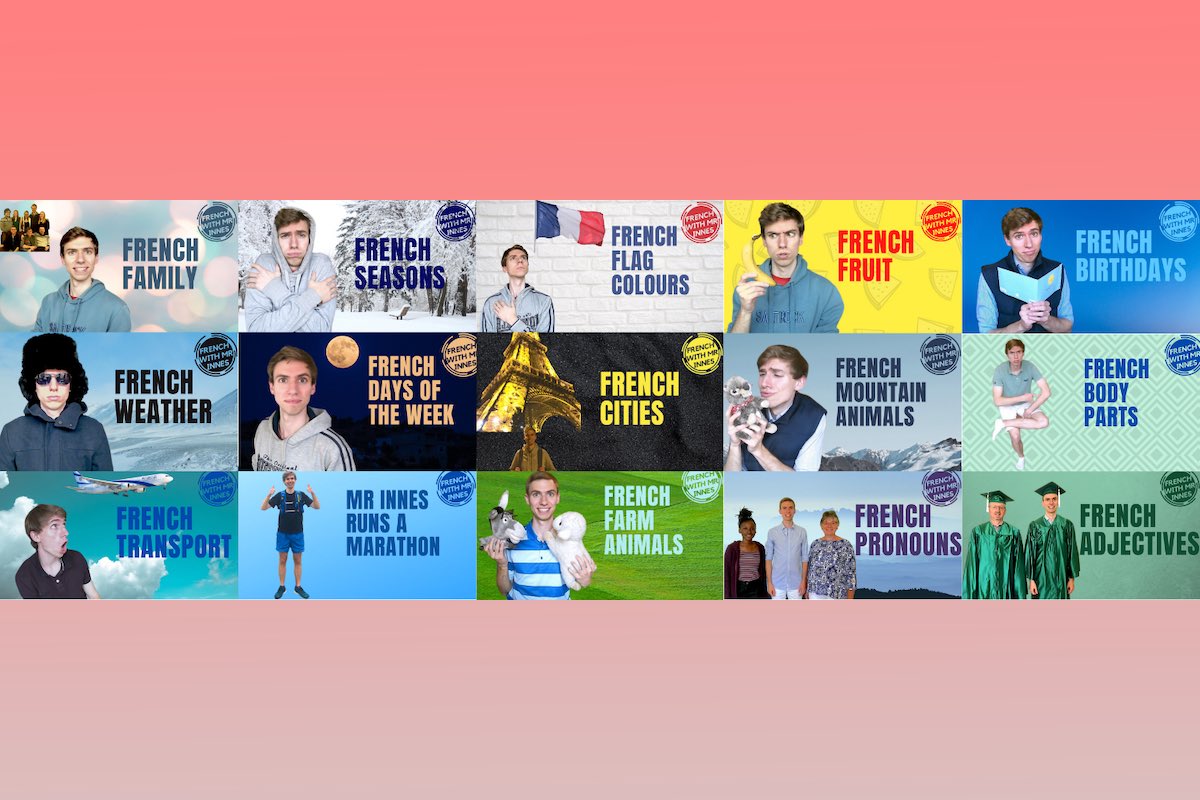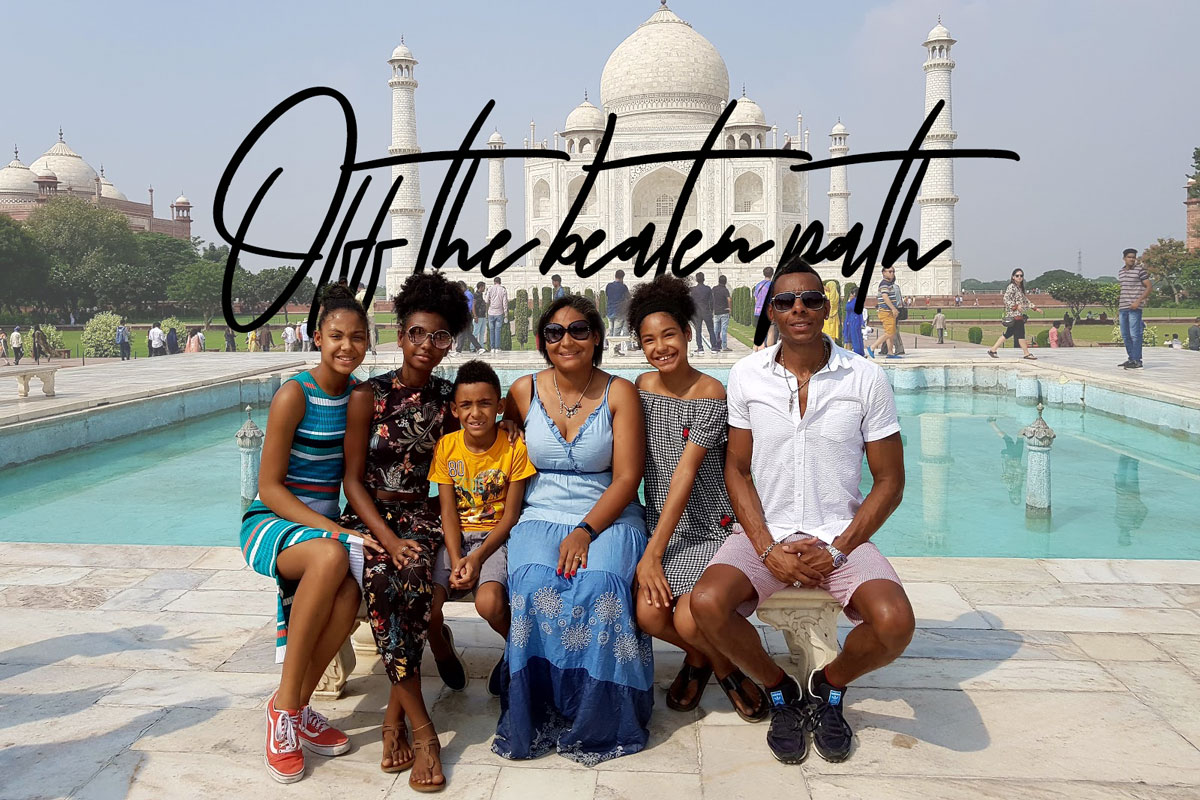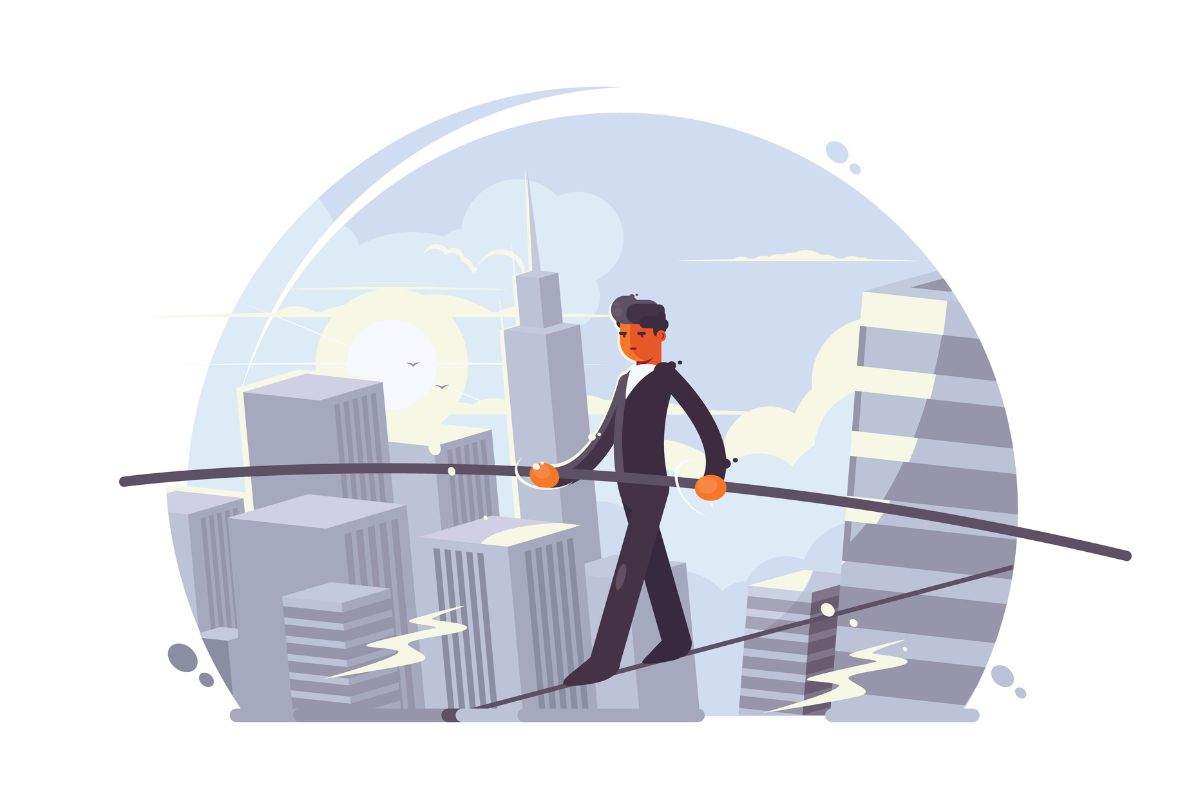Nothing to Balk at Here: Spending the Holidays Abroad Where East Meets West
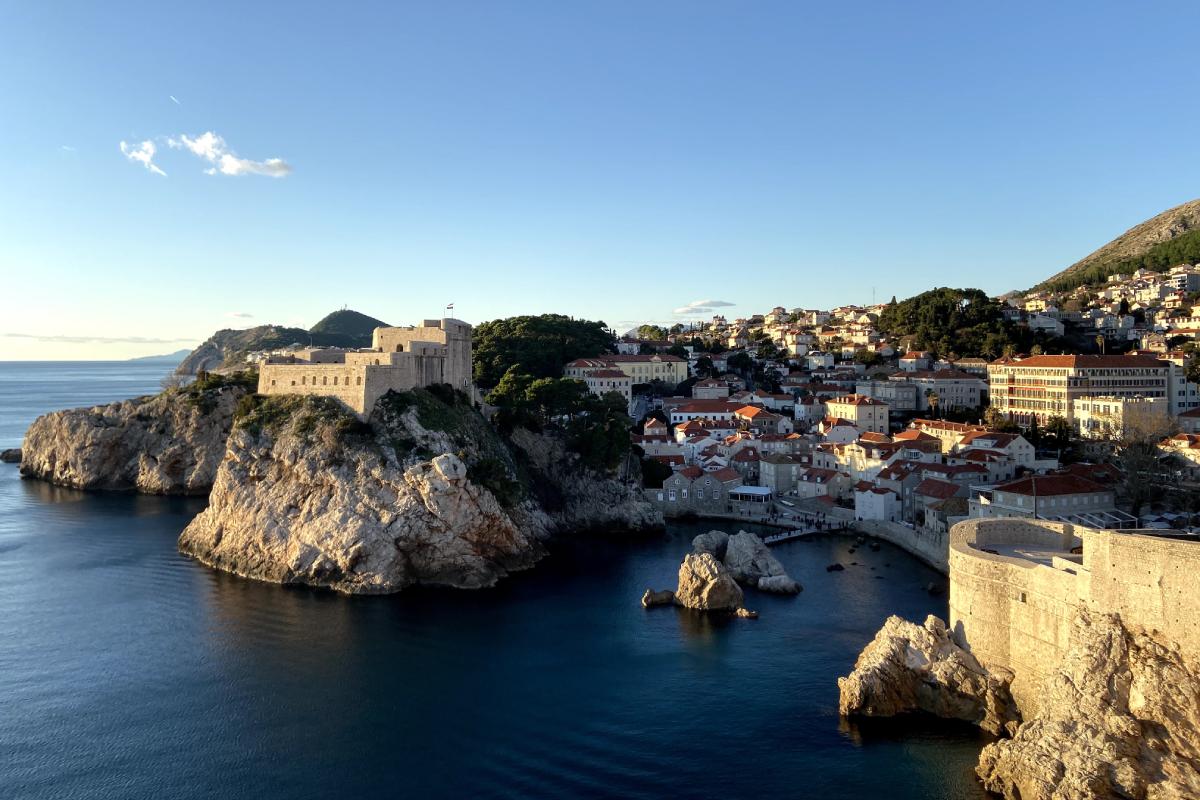
“Sponsored by Coca-Cola,” proclaimed a smiling Santa, original glass bottle in hand, extended invitingly on all four sides of the shuttered white wood-paneled food stand. “Will reopen at 8 p.m.” the sign read. This was a promising sign of possible entertainment and provisions for Christmas Eve in what otherwise seemed like an abandoned old fortress of white limestone, drawn curtains, hanging street-lamp shadows and endless stairs. Little did we know, not only would this square, filled with food stands, indeed reopen at 8 p.m., but it would magically transform by the candlelight of the nearby church and offer a first glimpse of what became a familiar, lively en plein air scene throughout the holidays in the Balkans.
It is generally proclaimed there is no place like “home” for the Holidays. While I appreciate creature comforts and familial merriment as much as the next person, over time I started to wonder how others were celebrating their holidays – or were not – and then how we all came around to ring in the new year. Slowly over time, I’ve crafted a tradition out of exploring others’ traditions during the holiday season. Travelling during December is by no means novel. As an American, domestic airports, train stations, buses, and highways are normally packed with prodigal sons, frazzled parents, and that token uncle trekking “home” to gather in destinations notorious and noteworthy in their own respect. “One person’s junk is another person’s treasure” can prove true for places too. As people gather, be it in San Diego or Syracuse, their corners of the world spill secrets and illuminate snapshots of life otherwise safeguarded during summer activities and high tourist season. Some communities celebrate together in public; others turn inward, leaving the streets with a rare quiet for those of us wandering. But how does that translate abroad? In what turned out to be my last pre-Covid jet-set, I hopped the pond December 2019 with my boyfriend to discover just that, leaving us equal parts enlightened and humbled as only the pursuit of new places and perspectives can uncover.
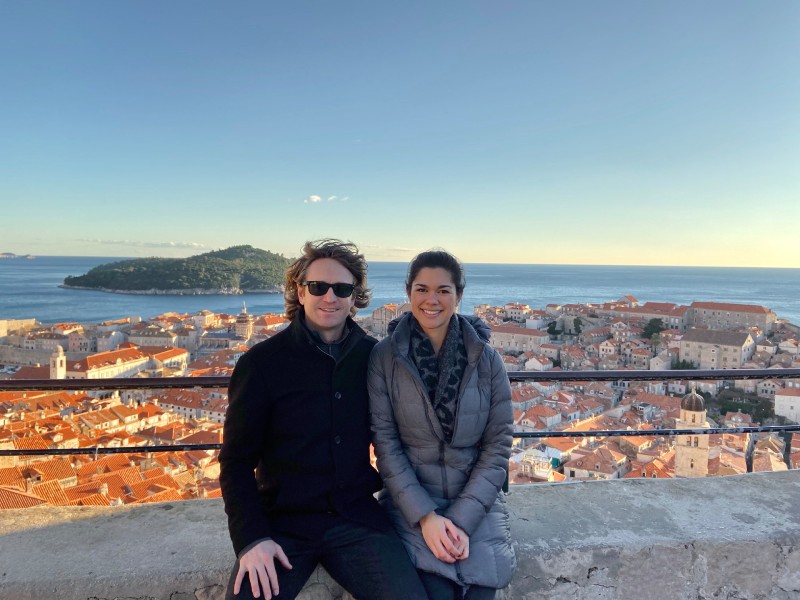
Where did we land? The Balkans. Why? Aside from never having been, there was fair motivation from a stirring book club read (Girl at War by Sara Novic), a surge in Instagram posts of the Dalmatian Coast, and periodic BBC News notifications on EU affairs in the region that piqued our interest. Rather than conduct extensive research prior to embarking, those winter trips had become a holiday from rigidity and thus pre-departure planning consisted of quick reviews of travel advisories and a few highlight reels to make sure we incorporated key cultural sites – and more importantly, as a wine industry rep, the not-to-be-missed provincial beverages and dishes. After breathing an air of comfort by booking the first and last nights’ lodging, we made note of a few possibilities, along with some must do’s, and departed eager to wander!
Backstory
We learned through the course of observation, conversation, and Google, that the Balkans, situated in South Eastern Europe flanked on the West by the Adriatic Sea and the Black Sea to the East, has a rather fragmented history. A complicated patchwork of conquests, shared roots, and dichotomous ideologies, the contemporary Balkans Peninsula encompasses: Slovenia, Croatia, Bosnia, Montenegro, Kosovo, Albania, Macedonia, Turkey, Bulgaria, Serbia, Romania, and Moldova. I know, a mouthful! Early Balkan territory building was rife with conflict that finally divided East and West during the Byzantium and Roman Empires and established a precedent that lasted well into modern times. Subsequent invasions quickly allowed for the expansion of a vast Slavic presence, namely the Croats and the Serbs, though the unity of any particular group remained short-lived into the 1300s. Enter the Turks and a near 600-year Ottoman reign – varying by degree and tenure across regions – whose impression most evidently remains and the fall of which marked the last longstanding semblance of unity for generations to come (Lonely Planet, n.d.).
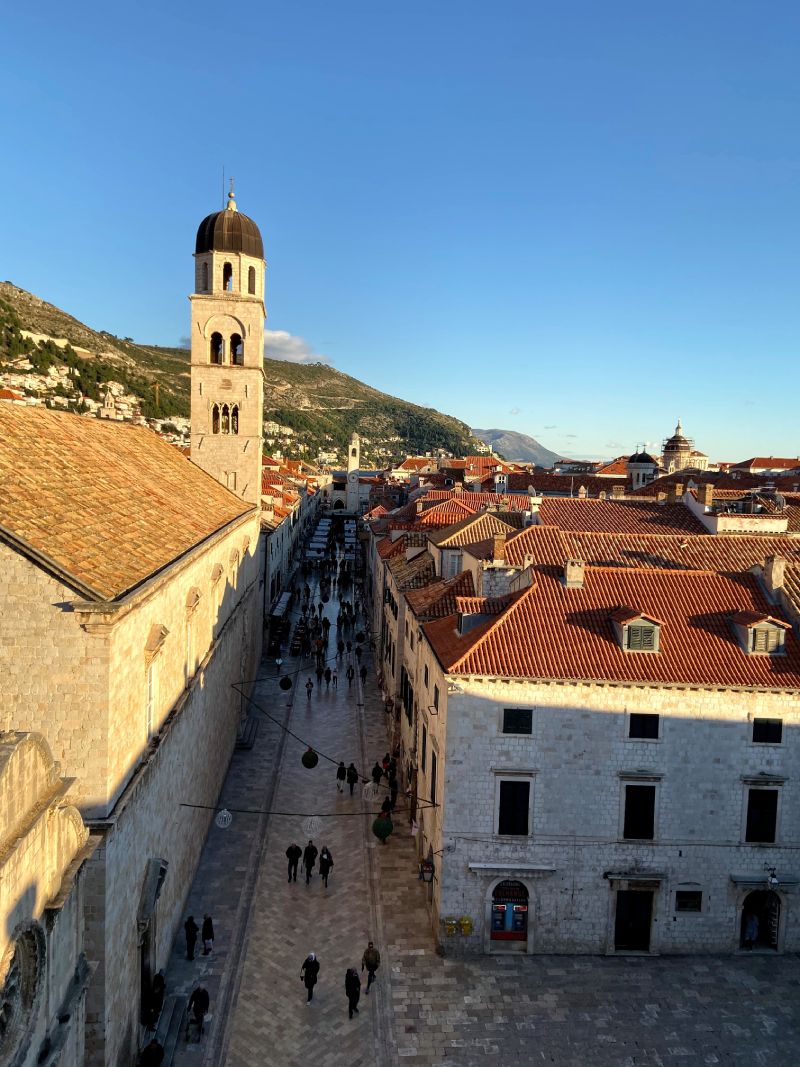
Much to the chagrin of my High School teachers, the assassination of Austrian Archduke Franz Ferdinand in Sarajevo 1914 and unintentional spark of World War I was the first tidbit of Balkan history that rang a bell on the walking tour (highly recommend Toureedoo Sarajevo for a free, comprehensive 2-hour review!). The subsequent precariously decreed unitarist solution, Yugoslavia, morphed into an equally tenuous second Yugoslavia, then communist-led, which, after liberation from German rule in 1944, exerted an iron fist until the 1990s. The successive deaths of regional communist leaders in the 1980s-90s unleashed turmoil, genocide, and economic collapse as the world watched the culminating three years and ten months-long Siege of Sarajevo. When the Dayton Accords solidified a ceasefire, the peninsula began an arduous rebuild under a fragile, decentralized political system. Since the turn of the century, the Balkan countries have been amiable with the European Union, though only Slovenia, Bulgaria, Romania and most recently Croatia, which joined in 2013, are members.
What sort of collective community arises from such an arc of unrest and resilience? The kind that made an idyllic backdrop for Game of Thrones, which hosted the 1984 Winter Olympics, and still boasts of a hardy stock of locals intent on socializing no matter the elements, as typified by that proper discothèque we stumbled upon in Dubrovnik on Christmas Eve. Complete with a live DJ, free-flowing cocktails, Top 40 American hits, and fur-appointed, boot-clad revelers of all ages, spirits were high. Here’s what else we discovered as we ventured further north and inland in search of festive traditions:
Language
On the first day in the Balkans, we realized our previous attempts with Germanic and Romance languages wouldn’t get us far. Stemming from a variety of dialects generally related but not standardized, the most commonly spoken language in the region is hesitantly (if not at times offensively) referred to as Serbo-Croatian. On the one hand, as recently as 2017, it was declared the pluricentric language (much, too, like English is viewed despite slight variations across Americans, Brits, and Australians). Yet still across Serbia, Croatia, Bosnia and Montenegro, each asserts their different official language. It’s thus likely as a Balkans traveler you aren’t the only one grappling daily with how to communicate. Suffice it to say, everyone is well versed in charades. It also quickly became evident that English is growing customary. Though, a well-meaning halo [hello], molim [please], and hvala [thank you] went a long way, we could easily navigate signs, menus, and ever-present food stalls with our mother tongue. Plus, “hot gin” luckily translates perfectly! Not only did this hold true in the recently popularized Dalmatian Coast, but we even encountered older generations manning fuel stations in the mountains whose command of our simple phrases far exceeded the inverse and could help facilitate necessities like coffee refills and directions. Simply put, engage!
Weather/What to Wear
On the second day in the Balkans, we stayed in an ancient fortress and learned that cold is just an attitude. Dubbed ‘The Pearl of the Adriatic,’ Dubrovnik is truly a gem. We were in awe of how the town glistened off of the coast; the contrast of the crystal blue water against the red tiled roofs was spectacular. As we made our way along the windy cliff from the airport, descending with the sun slowly, and impatiently, to old town, we could see why this was growing in popularity as a summer sun-bathers’ oasis. When we finally rolled to a stop at the taxi stand just outside the walls, the dark had fallen, but from across the bridge spilled an inviting glow as if the door had just flung open to your family’s home, beckoning you in for warmth and savory treats. Long strands of little white holiday lights adorned every archway, garland hung zigzagging above the main streets, and two-story cathedral christmas trees shone like lighthouses, with twinkling decorations reflecting off the white walls and streets and thus illuminating the night. A huge anticipatory 2020 sign hung above Pile Gate, the grand entrance; a fitting stately welcome. Yet despite the splendor and richness, we instantly felt embraced by the merriment as crowds of locals huddled around small food stalls with rising steam and hearty aromas from grilling sausages peppering the air. Bundled up for a breezy night with temperatures of a mere 44 degrees fahrenheit, no one seemed to feel the chill. Instead, they swayed and bobbed to the disco music echoing across the square. Daily, across the region, it was always like this. The locals paid no mind to winter temperatures as they passed the day and well into the night laughing, drinking, eating and dancing in open air markets and restaurant patios. One favorite spot was a speakeasy of sorts, a hideaway bar called Buža. Signaled only by a wooden arrow reading “Cold Drinks” you are pointed to a gated hole in the Dubrovnik fortress wall that, after ducking through, reveals large, terraced, smoothed out rocks with tables, umbrellas, a small refrigerator of beer, and astounding views of the sea. It was a striking reminder of the Scandinavian proverb – “no such thing as bad weather, just bad clothes.” Taking a cue from the residents, always well-appointed in thick coats, complimentary hats, gloves and stylish but practical boots, dressing for the elements empowered us to spend more time exploring and enjoying.
Seasonal Sights
As we talked with waiters, shopkeepers and travelers everyone asked if we had visited Plivitce Lakes. Fair enough! It traditionally attracts the most tourists of all Croatia’s noteworthy sites showcasing 16 alpine lakes, connecting waterfalls and lush hiking trails that in 1979 garnered UNESCO World Heritage status. However, travelling during off-peak season is not without its occasional lessons in FOMO. We knew that given the time of year, Plivitce Lakes was partially closed, and the open entrance was too far of a detour for our schedule. Particularly during the holidays – but this can be true of any time of year depending on the destination’s cultural observances, certain seasons, or even any given Sunday in Europe – we learned you do need to do a bit of extra research to outline what you most hope to see and prioritize what perhaps you may have to leave for the next trip. Museum hours change, roads close for inclement weather, and famous guide-book-mentioned restaurants will reduce hours to balance family time for the staff. Still, tradeoffs can have some benefits. The Northern Hemisphere in December meant we enjoyed: reduced prices for attractions and lodging, eating leisurely meals at typically packed hotspots, and strolling Sarajevo in falling snow – picture perfect for visiting a past winter olympics park! Read on for details on other relics worth the visit.
Getting Around
Renting a car and other modes of traveling from one location to another. Being from the US, one of the most fun parts of Europe is ease of mobility! Situated inland northwest of Dubrovnik lies the capital, Zagreb. Though RyanAir and EasyJet service quick flights to most intra-European destinations from either Dubrovnik or Zagreb, getting between the two is best facilitated by a scenic and charming road trip. Most cruise up the coast to stop in Split and Zadar before jutting inland. If you take this route, be sure to stop at Bibich Winery for a taste of history courtesy of the 500-year family legacy of winemakers. Alternatively, you can pick up a zippy BMW from Sixt for ~40 Euros per day and take the road less travelled through the Sutjeska National Park of Bosnia – part of one of the last two remaining primeval forests in Europe (Malcolm, 1996). We picked the latter. Though members of the EU and obliged to join the Schengen Area in the future, Croatia, Romania and Bulgaria as of now still require passport checks at border crossings. Sixt helped take care of the paperwork in advance so it was a smooth, quick stop (think 5 min drive-thru experience, betcha couldn’t order a Starbucks that fast) before carrying onward through winding mountain roads to Sarajevo. Depending on your speed, expect to drive about four and a half hours and make sure to pack snacks as there are few options for refreshments along the way. Driving means you won’t experience landing at Butmir Airport. However, there are tours from Old Town that explore the adjacent Sarajevo Tunnel, or Tunnel of Hope, preserving and educating about the “blood line” that kept the city alive. Spend two nights walking around town before logging another five-hour drive to Zagreb. At the border, be careful of motorists turning around and indicating they know a quicker way – they’ll expect compensation for the “helpful” detour. Stay in line, the checkpoint typically moves steadily during the day.
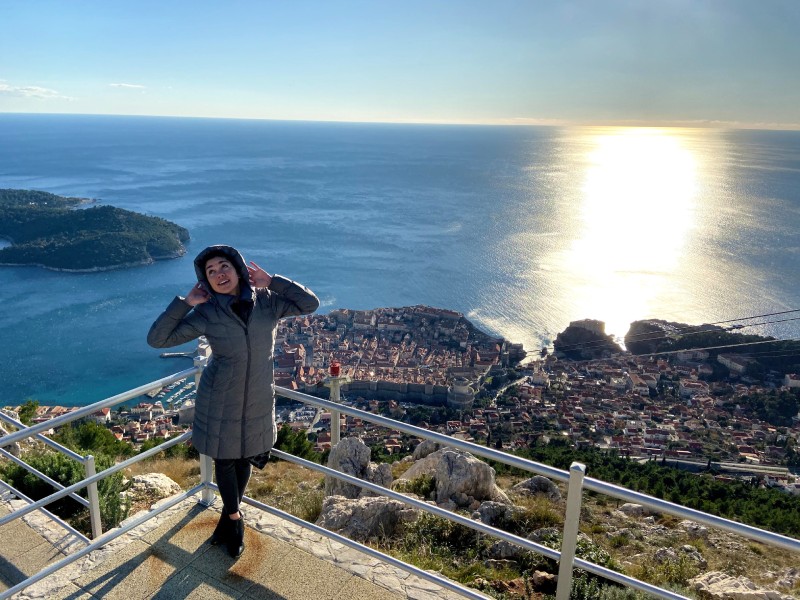
Historical Sights
It wouldn’t be the holidays without memories, right? History is fluid, open to interpretation, usually by the ruling power – or at least the storyteller of the time. While travelling, though, the ones we explore are typically strangers’, captured by relics and retold with a bit more care than drink-induced tall tales from that one uncle. In the case of Sarajevo, you’ll still find firsthand accounts of a country constantly in transition, lingering scars still healing, but nearly entirely reconstructed with an eye towards a dynamic future. An epicenter for east-meets-west culture, it boasts a wealth of museums and uniquely features a mosque, Catholic church, Orthodox church and a synagogue, all within the same neighborhood (5). Gazi Husrev-beg’s Mosque – one of the most “monumental” from the Ottoman Empire – anchors Old Town next to the Sarajevo Clock Tower which is the only in the world to keep Lunar Time for indicating Islamic prayer. Around the corner is the Moorish-style City Hall, a remnant of the Austro-Hungarian period (6). Mortar blast “roses” dot the city marking approximately 200 explosion sites from the Siege and corresponding tributes to the neighbors lost. Finally, nestled atop the hill and best reached by cable car, is the Olympic Complex where the Bobsleigh and Luge track still sits, open to the public as a park.
Museums
If you aren’t quite as adapted to the cold and need somewhere to duck in for warmth, I strongly recommend any of the many museums across the region. Ranging from new to old (Zagreb City Museum), serious to silly (Museum of Hangovers, Zagreb); there’s no shortage of insights and entertainment. A few honorable mentions also include the Zagreb Museum of Broken Relationships where you can spend an hour or so taking in the crowd-sourced accounts spanning the comical and cringe-worthy to truly heart-wrenching. Likewise, the Museum of Illusions, family-friendly with about an hour wait on weekends due to capacity, is a fun outlet of optical mind games and interactive exhibits. On the more reflective side is the Bosnia Children of War Popup, a beautifully curated traveling installment based in Sarajevo, and Dubrovnik Pharmacy Museum housed inside the old Monastery.
Raised a glass of Rahkia – Drinking traditions in the Balkans are as vibrant as the cities. Holiday stalls all boast piping cauldrons of hot gin, only slightly less sweet than the mulled wine alternative. Served in little to-go cups for cheap, they were perfect hand warmers while darting from market to market. Another very popular option was coffee. We learned Bosanska kafa has a proud history that despite being similarly prepared and reminiscent of Turkish tradition is distinctive in a couple key ways. First, the process varies. Bosnian coffee heats the water separate from the grounds and is served without being sweetened. Second, it differs in service. As opposed to the Turkish variety, Bosnian coffee arrives still in the copper pot for table self-serve, yielding a strong foam but considerably less sludge in your actual coffee cup. Thick and potent, it’s also presented with a small sweet to help balance the rich coffee (7). (Caveat, be aware of the heavy smoke from a still ubiquitous smoking culture.) As the evening progresses, I highly recommend pursuing Croatian Wine – Teran or Plavac Mali for red lovers and Graševina for whites – or local Rakia, the popular local fruit spirits with a reputation for being high alcohol. All are built to pair with the flavorful Balkan dishes.
Playing holiday hooky from family dinners at home can be the most uncertain part of spending traditional times away abroad. If you grew up with a standard fare, it can be an adventure to gamble with uncertain menus on the road. Luckily, Balkan food indulges both variety and comfort. Along the Adriatic coast you can’t go wrong with seafood. From Dalmatian Risotto – black in color and savory in flavor – to full fish filets, the Mediterranean influence abounds. In Bosnia, however, we encountered more menu translations that were open to interpretation and service that favored locals over tourists; to us, this is usually a good sign of a respected authentic place. Though Holiday market food stalls were by far the best place to enjoy Kulen, spiced meat, or stewed cabbage rolls from huge open fire grills, the regional dish – and clear local go-to of Bosnia – was Ćevapi. Mini skinless sausages of ground beef or lamb were served in flatbread with a heaping side of roughly chopped raw onions and mustard. Simple, but incredibly flavorful comfort food. Similarly, pite or flaky pita pie pastries stuffed with meat (burek), cheese (simica), potatoes (Krompiruša) or any number of singular ingredients – strangely, never combined – abounded. Don’t be deterred by the seemingly high cost – dishes are served by weight and actually, they are super cheap!
As another new year beckons and the holidays are quickly approaching, this year they’ll look and feel a bit different. More of us will still be Zoom calling rather than jet-setting, gathering only in small groups but more grateful than ever for the little nuances that make whatever corner of the world we are in feel festive. Take the time to remember and reinfuse life in reclaiming the past, issue new meaning to old relics and do a bit of research on the Balkans. They still permit American travelers, and you’ll enjoy a warm welcome when you have an opportunity to pass through!
Lonely Planet History in Western Balkans https://www.lonelyplanet.com/western-balkans/background/history/a/nar/c0d0dc25-4b33-4384-98f1-122d803f6027/1326051
https://www.britannica.com/place/Bosnia-and-Herzegovina/Ottoman-Bosnia
https://www.britannica.com/place/Yugoslavia-former-federated-nation-1929-2003
Wikipedia – Malcolm, Noel (1996). Bosnia: A Short History [Paperback]. London: NYU Press. pp. 107, 364. ISBN 978-0-8147-5561-7.
https://travelarchitect.rs/architecture-of-sarajevo-east-meets-west/
http://www.bbc.com/travel/story/20140707-the-complicated-culture-of-bosnian-coffee


